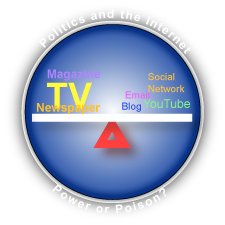 Today was a major milestone for the Executive’s Guide to LinkedIn. Partnering with the Samurai Business Group, I launched the EGLI’s public seminar program at the University of Chicago’s Gleacher Center in front of a sold out crowd of business executives. The seminar, “LinkedIn Core Value Realization,” is designed for experienced LinkedIn users who want to significantly boost their LinkedIn ROI. My two sessions, “The Executive’s Toolbox” and “Template and Technique,” were followed by Samurai Partner Bob Lambert’s “Connecting the Online with the Offline,” which offered some profound insights on trust and networking.
Today was a major milestone for the Executive’s Guide to LinkedIn. Partnering with the Samurai Business Group, I launched the EGLI’s public seminar program at the University of Chicago’s Gleacher Center in front of a sold out crowd of business executives. The seminar, “LinkedIn Core Value Realization,” is designed for experienced LinkedIn users who want to significantly boost their LinkedIn ROI. My two sessions, “The Executive’s Toolbox” and “Template and Technique,” were followed by Samurai Partner Bob Lambert’s “Connecting the Online with the Offline,” which offered some profound insights on trust and networking.
Here I’ll offer you some personal reflections on the topics and the sharing that went on in the room.
[…]

 The Executives’ Club of Chicago fielded an expert panel to brief Midwest executives on Web 2.0’s current and likely impact on one of the most watched U.S. elections in recent history. Marie Cocco, a renowned political columnist, Peter Greenburger, Director of Google’s Elections & Issue Advocacy Team, and Alan Webber, Senior Analyst of Forrester Research brought to bear diverse perspectives on the question at the event, which took place at The University Club on January 31, 2008.
The Executives’ Club of Chicago fielded an expert panel to brief Midwest executives on Web 2.0’s current and likely impact on one of the most watched U.S. elections in recent history. Marie Cocco, a renowned political columnist, Peter Greenburger, Director of Google’s Elections & Issue Advocacy Team, and Alan Webber, Senior Analyst of Forrester Research brought to bear diverse perspectives on the question at the event, which took place at The University Club on January 31, 2008. Web 2.0 is a new phenomenon that is beginning to realign the balance of power between producers/providers of products/services and customers because it enables customers to self-organize and wield unprecedented influence in the market. “Web 2.0” refers to a group of (usually) free user-friendly Web applications like blogs, wikis, integrated video/phone services and social networking sites (more below) that enable individuals to connect, collaborate and concatenate with unprecedented ease. E-Commerce (doesn’t it sound quaint now?) first enabled consumers to gain a new level of information about products and services and, as adoption proceeded, to buy over the Web. That was “Web 1.0” and it was still largely one-way communication because information flowed from the Web to customers. “Web 2.0” is focused on letting individuals self-organize, interact, collaborate and be equal players in what aficionados call “the conversation” of the Web.
Web 2.0 is a new phenomenon that is beginning to realign the balance of power between producers/providers of products/services and customers because it enables customers to self-organize and wield unprecedented influence in the market. “Web 2.0” refers to a group of (usually) free user-friendly Web applications like blogs, wikis, integrated video/phone services and social networking sites (more below) that enable individuals to connect, collaborate and concatenate with unprecedented ease. E-Commerce (doesn’t it sound quaint now?) first enabled consumers to gain a new level of information about products and services and, as adoption proceeded, to buy over the Web. That was “Web 1.0” and it was still largely one-way communication because information flowed from the Web to customers. “Web 2.0” is focused on letting individuals self-organize, interact, collaborate and be equal players in what aficionados call “the conversation” of the Web.